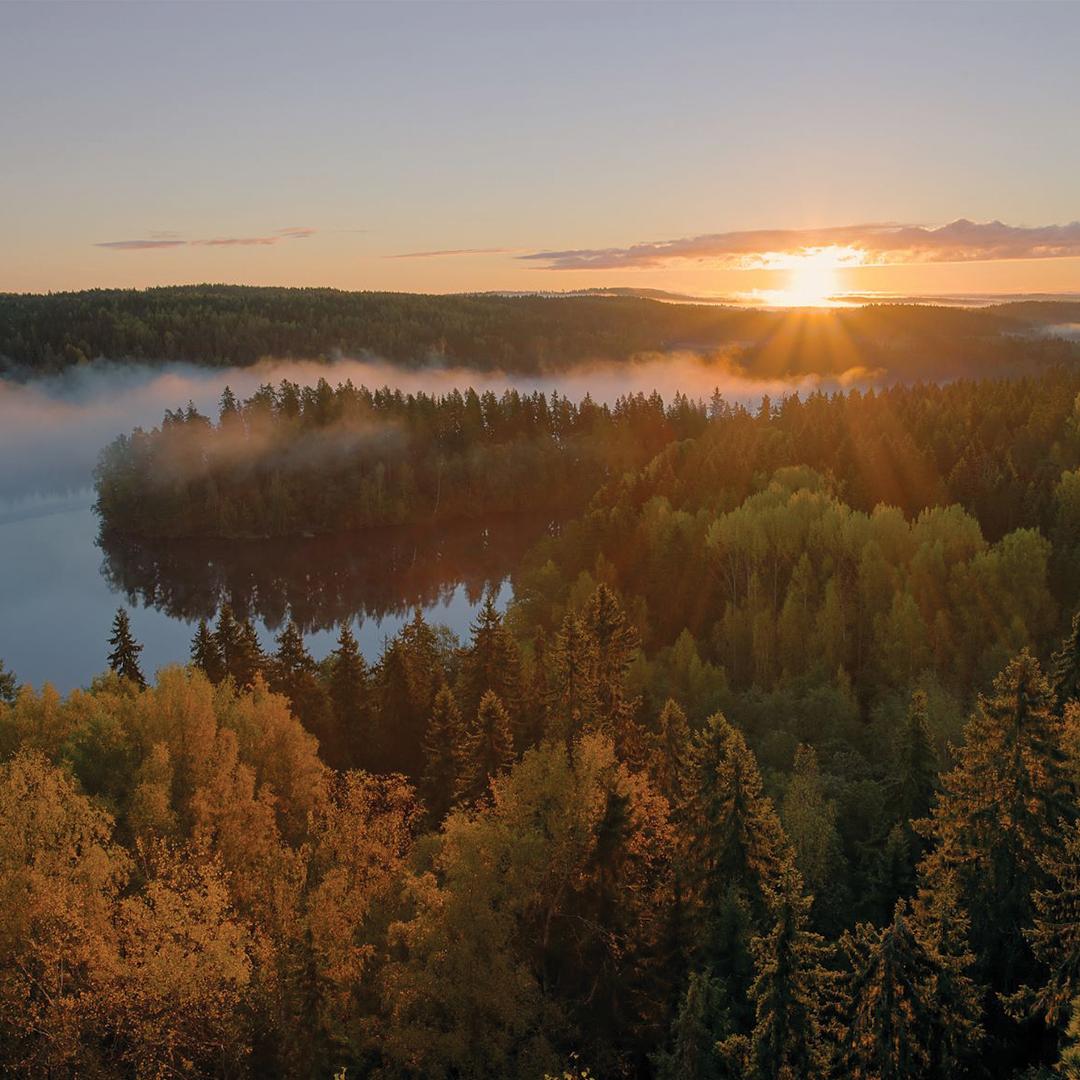Renewable & Recycled energy sources
For us, it is important that we use renewable and recycled energy sources in our solutions as much as possible – both in our own district heating production, and in the solutions we tailor for industries and large properties.
Specifically, we take advantage of things that are left over in society and that cannot be used for other purposes. On the coldest days of the year, a small part of our heat is produced with oil, but we aim to phase out the use of all fossil oil in our district heating production in Sweden and Finland by the end of 2030.
In addition, our goal is also to phase out the small amount of peat currently used in our district heat production in Finland by the end of 2030.
What are renewable and recycled energy sources?
Renewable energy sources are sources that do not run out in the foreseeable future but are constantly being renewed.
This includes, for example, bio-fuel, which is fuels based on biomass. The origin of this fuel can come, for example, from trees, plant oil or food residues and in some cases is processed into suitable forms for the purpose. Another renewable energy source is geothermal energy where energy from the sun and land is used for heating and cooling.
The opposite, non-renewable sources, are sources where energy will run out or be renewed only in millions of years. Non-renewable sources include, for example, the fossil sources of natural gas, oil, and coal.
A recycled energy source is basically a residue from a process that, instead of being wasted, can be utilized as a fuel. For example, it can be to use the energy in waste instead of putting the waste in landfill. It can be waste heat from an industrial process, wood chips from recycled wood or sewage sludge that is utilized. Biofuel can in some cases be classified as both a renewable and recycled energy source when residues from the forest industry, such as branches and tops, are used as an energy source in our plants.
Waste to value
We have helped many industrial partners to rebuild their production so that together we can recover waste heat, also called residual heat, from their processes. Sometimes the waste heat can be utilized in the customer’s own processes and in some cases, when the heat does not have a sufficient temperature for the industry, we can use it as a good base for our district heating.
A large part of our energy that we supply comes from residual products that the forest industry cannot use. Such as bark and sawdust or branches and tops from logging. We can also recover energy from recycled wood chips, which mainly come from demolition timber. The recycled chips contain, in addition to wood, some paints, varnishes and more that are suitable to remove from the cycle by burning and getting out the toxins that the material contains in order to be able to deposit safely.
The same applies to household and industrial waste; when we cannot use the waste for anything else, our heating plants take care of the material, purify the flue gases, and remove the unhealthy substances in a controlled way. Since we in our facilities in Sweden are good at converting waste into energy, we also help our European friends to utilize their waste with us.
Why are we investing in recycled fuels?
Just like many other industries, the energy industry is also facing major changes with the climate change that is taking place. When both transportation and industries switch from fossil to non-fossil fuels, our heat plays an important role.
How? Well, by using fuels other than those that everyone else is competing for.
When we upgrade our own plants, they are rebuilt to handle several types of recycled fuels. These recycled fuels are materials that cannot be reused in the cycle – and therefore is turned to energy. These are mainly residues or waste in the form of recycled wood, plastic, and paper. Instead of it being deposited in landfills, we create energy for industrial processes and heat for households from it.
Anders EricssonCEO, Adven Group
It is very important that these recycled fuels are taken care of in an environmentally sound and safe way. Therefore, our facilities are equipped with a powerful purification system that sorts out toxins such as heavy metals and other things we do not want to circulate further in our society.
In this way, we thus contribute to reducing the risk of hazardous substances ending up in nature – at the same time as we warm our customers.
Waste-to-Energy is one of the steps in EU’s waste hierarchy
That no waste would ever be produced would be the dream of most societies. However, it is a utopia in a world where consumption is increasing avalanche-like. In Sweden alone, a country known for being good at recycling, almost 500 kilos of waste are thrown away per person every year.
The waste hierarchy, or “waste ladder”, is an EU directive adopted by several countries to govern how the waste produced should be disposed of. By following it, we can all contribute to a sustainable cycle.
5 stages of the Waste Hierarchy:
1. Minimize
First of all, we should all make sure to minimize the use of things that eventually generate waste, simply refrain from buying things or try to buy goods that are produced in a resource-efficient way.
2. Reuse
When we no longer have use for the item, such as a sweater, we can try to get the sweater reused by someone else, for example by giving it, or selling it, to someone who can use it.
3. Recycle
When the product can no longer be reused, it is seen as waste and the material in the waste must thus be recycled. We do this, for example, by sorting packaging, composting or handing the product to a company that can recycle the material to make new goods.
4. Extract the energy
If the waste cannot, or should not, be recycled, our step comes into the picture. We extract the energy that remains in the material and sort out any toxins that we do not want to circulate in society – and make heat, and in some cases electricity from it. In this way at least the energy in the material can be utilized.
5. Landfill
Landfilling means throwing the waste in a landfill. It is the worst option and the last solution that we should try in every way to avoid. In Europe, about 130 million tons of waste is put in landfill every year, which is a lot of energy that could be used to heat large cities.
Transitional fuels
Our strategy is clear, we want to produce energy using renewable and recycled energy sources. However, we recognize that the transition to a sustainable future is challenging for the society and happens at a different speed in the markets in which we operate.
This means in some cases we might not reach all the way with renewable and recycled solutions in the first phase, but always want to make sure there is a clear path to a sustainable solution, within a foreseeable future.
All good steps are needed – in that way we create a sustainable impact.

 Newsletter
Newsletter